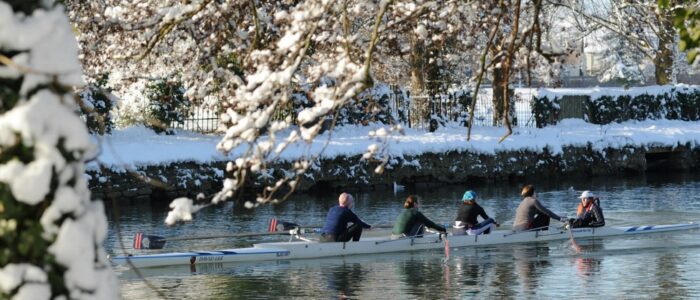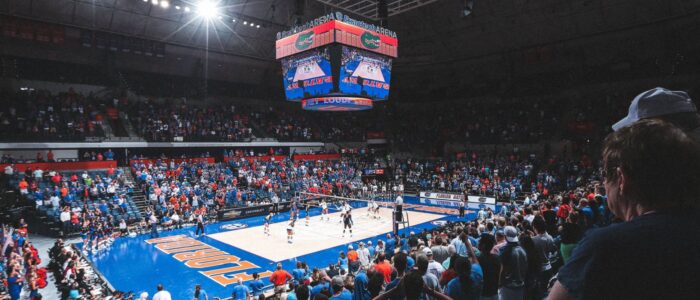Hospital Teaching Kitchen
- Home Page 147

Crime Prevention Through Environmental Design
The most widely cited standard on school security in the United States is the Crime Prevention Through Environmental Design guidelines developed by the National Institute of Justice . CPTED is a multidisciplinary approach to deterring criminal behavior through the design and management of the built and natural environment. It emphasizes the importance of designing schools and their surroundings in a way that maximizes natural surveillance, territoriality, and access control, while minimizing opportunities for crime and creating a sense of ownership and community.
CPTED guidelines have been adopted by many schools and law enforcement agencies across the country and are often referenced in school safety plans, security assessments, and training programs required by the Clery Disclosure of Campus Security Policy and Campus Crime Statistics Act.
Bethlehem Down
The secular world adapts;
the Church endures.
History of Western Civilization Told Through the Acoustics of its Worship Spaces
Claude
This content is accessible to paid subscribers. To view it please enter your password below or send mike@standardsmichigan.com a request for subscription details.
Higher Learning Commission
This content is accessible to paid subscribers. To view it please enter your password below or send mike@standardsmichigan.com a request for subscription details.
Sports, Recreational Facilities & Equipment
Recreational sports, athletic competition, and the facilities that support it, are one of the most visible activities in any school, college or university in any nation. Enterprises of this kind have the same ambition for safety and sustainability at the same scale as the academic and healthcare enterprises.
According to IBISWorld Market Research, Sports Stadium Construction was a $6.1 billion market in 2014, Athletic & Sporting Goods Manufacturing was a $9.2 billion market in 2015, with participation in sports increasing 19.3 percent by 2019 — much of that originating in school, college and university sports and recreation programs. We refer you to more up to date information in the link below:
Sports & Athletic Field Construction Industry in the US – Market Research Report
We track leading practice discovery in titles released by International Standards Organization’s ISO/TC 83: Sports and other recreational facilities and equipment. The German Deutsches Institut für Normung (DIN) iss the global Secretariat and ASTM International as the US Technical Advisory Group Administrator.
From the ISO TC/83 prospectus:
BUSINESS PLAN | ISO/TC 83 Sports and recreational equipment | EXECUTIVE SUMMARY
Academic units in the US that want to offer their sports management or international studies students a front row seat on the technology and management of sport may want to participate in ISO/TC/83 business. To start, organizations within the United States may communicate directly with ASTM International, West Conshohocken, PA 19428-2959, Phone: (610) 832-9804. Contact: Joe Khoury (jkoury@astm.org).













We refresh our understanding of the current status of best practice literature at least once per month during our Sport colloquia. See our CALENDAR for the next online meeting; open to everyone.
Issue: [19-46]
Category: Athletics and Recreation, International,
Contact: Mike Anthony, Jack Janveja, Christine Fischer
LEARN MORE:
International harmonized stage codes
Security 300
Today we run a status check on the stream of technical and management standards evolving to assure the highest possible level of security for education communities. The literature expands significantly from an assortment of national standards-setting bodies, trade associations, ad hoc consortia and open source standards developers. CLICK HERE for a sample of our work in this domain.
School security is big business in the United States. A few years ago we could deal with physical security separately from cybersecurity. Not so much anymore. In today’s colloquium — essentially a survey module presenting a broad overview — we seek to understand product and interoperability standards for the following technologies:
Video surveillance: indoor and outdoor cameras, cameras with night vision and motion detection capabilities and cameras that can be integrated with other security systems for enhanced monitoring and control.
Access control: doors, remote locking, privacy and considerations for persons with disabilities.
As time permits, we will reckon with first cost and long-term maintenance cost, including software maintenance.
According to a report by Markets and Markets, the global school and campus security market size was valued at USD 14.0 billion in 2019 and is projected to reach USD 21.7 billion by 2025, at a combined annual growth rate of 7.2% during the forecast period. Another report by Research And Markets estimates that the US school security market will grow at a compound annual growth rate of around 8% between 2020 and 2025, driven by factors such as increasing incidents of school violence, rising demand for access control and surveillance systems, and increasing government funding for school safety initiatives.
Noteworthy: The combined annual growth rate of the school and campus security market is greater than the growth rate of the education “industry” itself.
Education Community Safety catalog is one of the fast-growing catalogs of best practice literature. We link a small sample below and update ahead of every Security colloquium.
Executive Order 13929 of June 16, 2020 Safe Policing for Safe Communities
Clery Compliance | 2024 Nova Southeastern University Public Safety Department
National Center for Education Statistics: School Safety and Security Measures
International Code Council
2021 International Building Code
Section 1010.1.9.4 Locks and latches
Section 1010.2.13 Delayed egress.
Section 1010.2.14 Controlled egress doors in Groups I-1 and I-2.
Free Access: NFPA 72 National Fire Alarm and Signaling Code
Free Access: NFPA 731 Standard for the Installation of Premises Security Systems
IEEE: Design and Implementation of Campus Security System Based on Internet of Things
APCO/NENA 2.105 Emergency Incident Data Document
C-TECC Tactical Emergency Casualty Care Guidelines
Department of Transportation Emergency Response Guidebook 2016
NENA-STA-004.1-2014 Next Generation United States Civic Location Data Exchange Format
Example Emergency Management and Disaster Preparedness Plan (Tougaloo College, Jackson, Mississippi)
Partner Alliance for Safer Schools
Federal Bureau of Investigation Academia Program
Most Dangerous Universities in America
Federal Bureau of Investigation: Uniform Crime Reporting Program
When your students love the school security guard- he gets flowers! Thanks, Steve! You are the BEST and we appreciate your hard work keeping us safe and building relationships! pic.twitter.com/VCJQ6y9S44
— Casey Otten (@casey_otten) May 26, 2023
Guide to Premises Security
Managing capital‐intensive campus infrastructure embedded within a politically sensitive community presents challenges not present in private industry real assets. Differences in everything from department culture to annual facility use patterns mean that facility managers cannot implement the same safety approaches in all buildings. Approaches must be scaled and tailored to the occupancy type and informed by the interconnectedness and the specifics of a given facility. Accordingly, the original University of Michigan standards advocacy enterprise (see ABOUT) began following the development of safety concepts in both NFPA 730 and NFPA 731 with the release of the 2008 Edition. Thereafter, it collaborated with trade associations and subject matter experts from other universities (notably Georgetown University and Evergreen State University) to advocate user-interest concepts in the 2011 revisions.
Since 2008, campus security issues have only become more complex technically; across an expanding minefield of sensitivities. Since 2008 we have observed the emergence of about one-hundred new consensus products being developed by the same number of new trade associations and producers presenting campus security solutions.
NFPA 730 Guide to Premise Security is a consensus document that describes construction, protection, occupancy features, and practices intended to reduce security vulnerabilities to life and property. Related document — NFPA 731 Standard for the Installation of Electronic Premises Security Systems covers the application, location, installation, performance, testing, and maintenance of electronic premises security systems and their components. The first is a performance document; the second a prescriptive document for the construction, operation and maintenance of electrotechnologies that support premise security.
Public consultation on the 2023 revision closed January 5, 2022 however the NITMAM process permits additional comment at the 2023 NFPA Annual meeting in Las Vegas in June 2023.
The 2026 Edition is now open for public input until January 4, 2024.
Public Comment on the First Draft of the 2026 Edition will be received until January 3, 2025
What electronic keycards eliminated.
(It was not a positive development) pic.twitter.com/eIozU6XFSN
— O.W. Root (@NecktieSalvage) January 20, 2025
As always, we encourage direct participation by user-interests supporting the education facility industry. You may do so by CLICKING HERE.
It is never a bad idea to key in comments on your own but if you would like some insight into our advocacy vectors since 2008 you are welcomed to click in our periodic Risk and Public Safety colloquia during which time we pick through technical, policy and enforcement specifics. We have been hammering on Chapters 11 and 12, Education and Healthcare Facilities, respectively; for five cycles. See our CALENDAR for the next online meeting; open to everyone.
Issue: [10-3], [11-58], [14-44] and [16-127]
Category: Electrical, Telecommunications, Information & Communications Technology, Public Safety, Risk Management, #SmartCampus
Colleagues: Mike Anthony, Jim Harvey, Richard Robben
More
Department of Homeland Security: K-12 School Security
National Campus Safety and Security Project
NFPA 730 2023 Public Input Report
NFPA 730 730_F2019_PMM_AAA_FD_PIresponses
NFPA 730_F2019_PMM_AAA_SD_PCresponses
Development of a Touchable VR Planetarium for Both Sighted and Visually Impaired People
Development of a Touchable VR Planetarium for Both Sighted and Visually Impaired People
Kota Suzuki, et. al
Abstract: The authors proposed and developed a “touchable” VR planetarium. The user wears a VR headset and “touches” the stars with the controllers. Because we can’t touch the stars in reality, this application provides the users with additional value and experience of the planetarium. As this feature is valuable for visually impaired people to experience the starry sky, the authors also implemented the functions that help it. In the trial use by visually impaired people, they experienced the starry sky with the support functions and evaluated the VR planetarium as a valuable application.
「月面版GPS」を日米欧が標準化へ、月-地球間の光通信も実用化に前進 https://t.co/HvmfDrdH8O
— 日本規格協会 (@jsainfra) June 18, 2024
New update alert! The 2022 update to the Trademark Assignment Dataset is now available online. Find 1.29 million trademark assignments, involving 2.28 million unique trademark properties issued by the USPTO between March 1952 and January 2023: https://t.co/njrDAbSpwB pic.twitter.com/GkAXrHoQ9T
— USPTO (@uspto) July 13, 2023
Standards Michigan Group, LLC
2723 South State Street | Suite 150
Ann Arbor, MI 48104 USA
888-746-3670





























